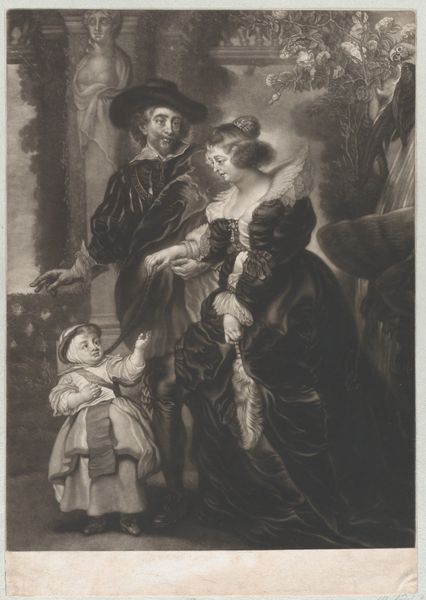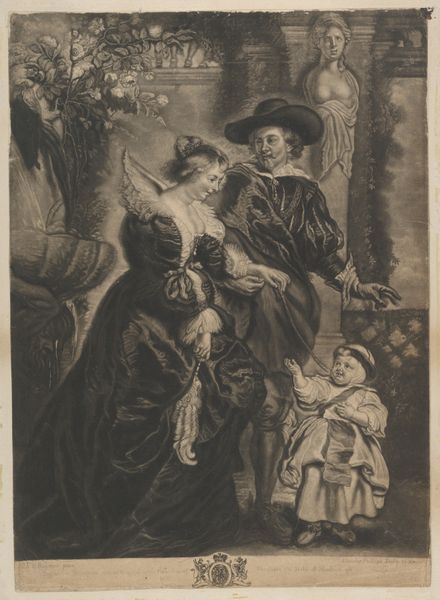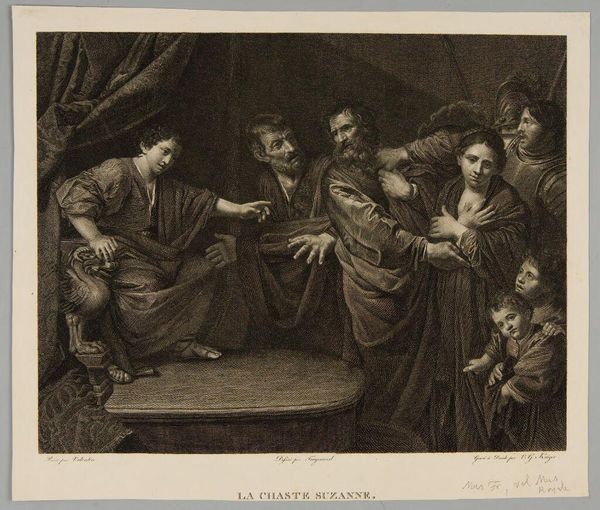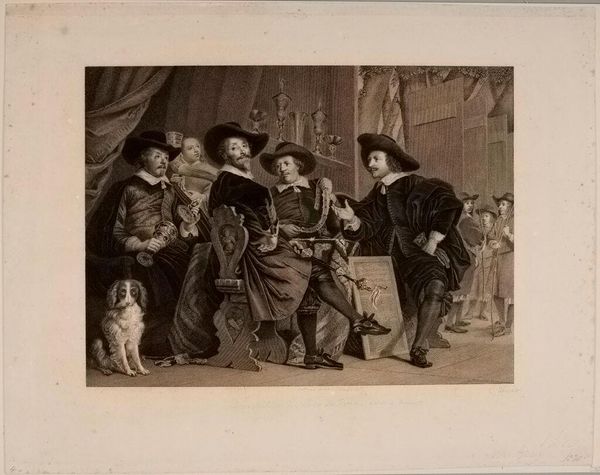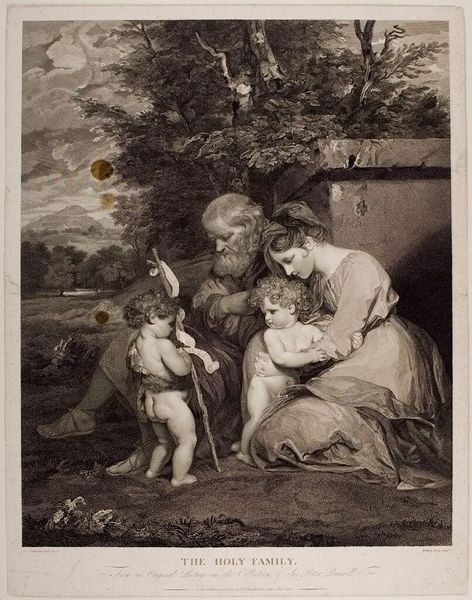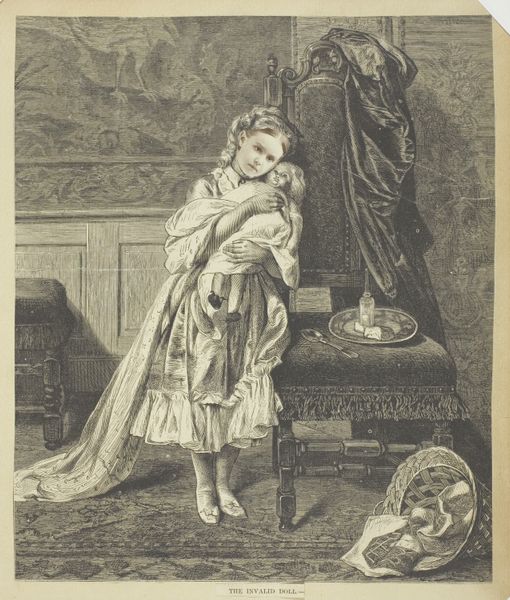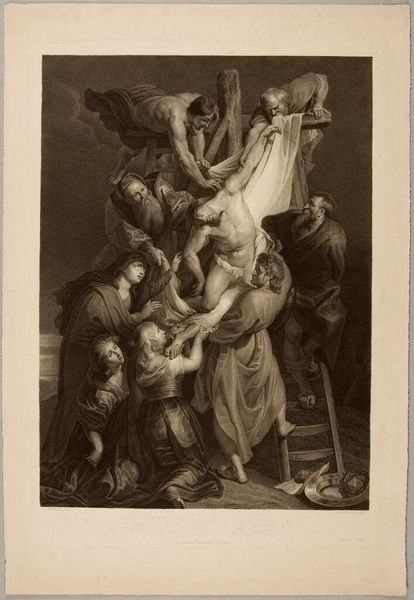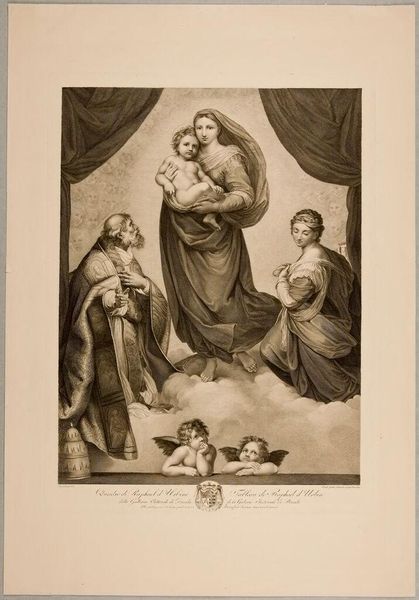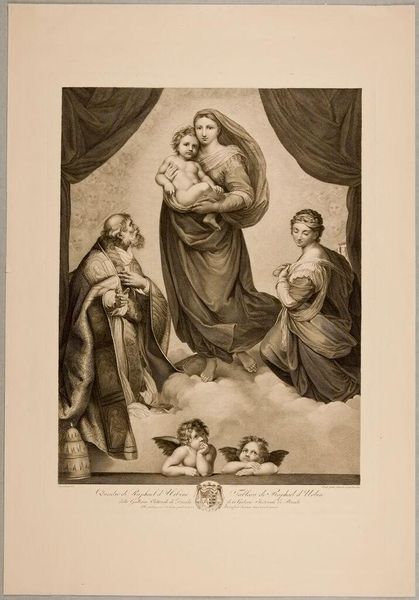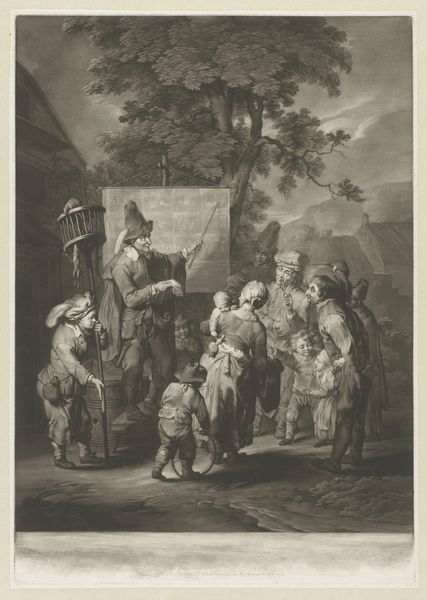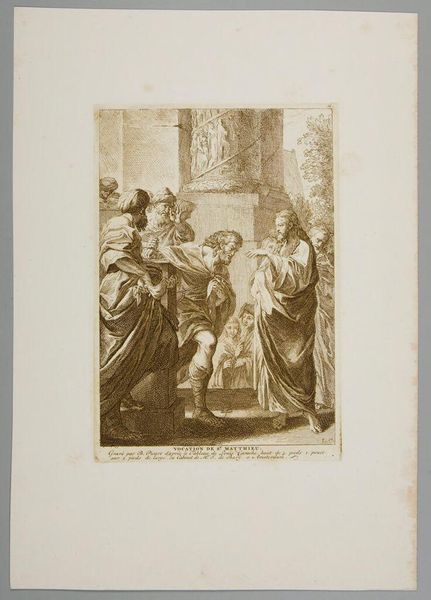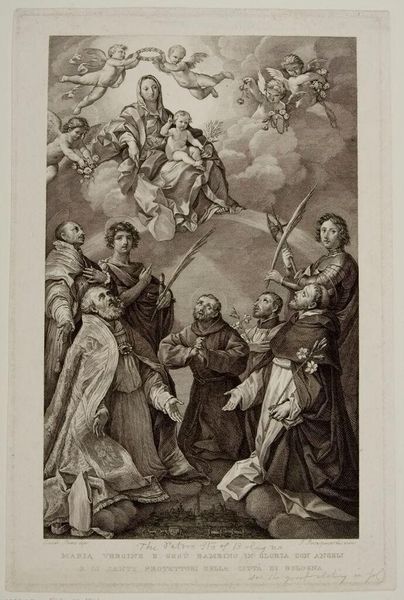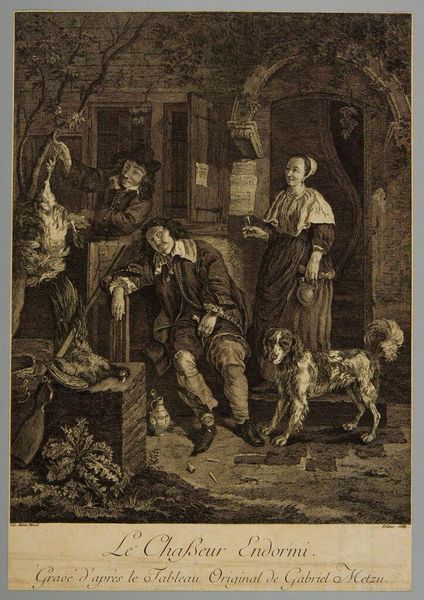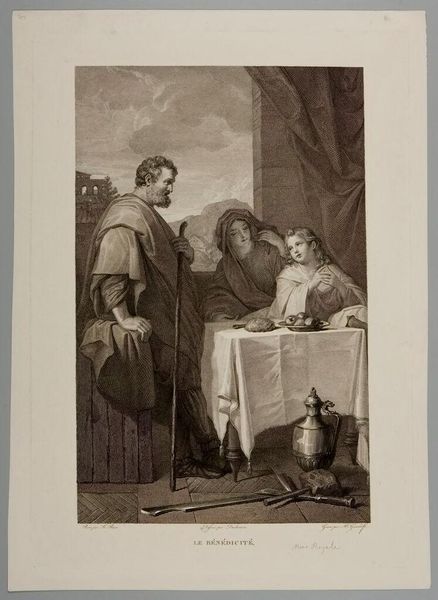
Copyright: CC0 1.0
Curator: This is James McArdell's "Rubens and his wife and child," housed here at the Harvard Art Museums. Editor: It feels incredibly staged, doesn't it? Like a performance of domesticity rather than a genuine moment. Curator: Absolutely. McArdell, active in the 18th century, reproduces Rubens's family portrait, tapping into the symbolism of familial harmony. Notice how Rubens gestures outward, as if presenting his family to the world. Editor: And the world he presents them to is very class-conscious. The mother’s elaborate gown and the child’s fine clothing, the architectural detail in the background—it all speaks to wealth and status. Curator: Such images reinforced prevailing social hierarchies while suggesting an idealized image of the family unit that many would have aspired to. This portrait echoes the iconography of similar domestic scenes throughout history. Editor: It's interesting how images of family, even those from centuries ago, still carry so much weight in shaping our modern understanding of gender roles and expectations within the family. Curator: Indeed. By reinterpreting Rubens, McArdell ensured these social ideals retained their power across time. Editor: Food for thought on how families were then and now.
Comments
No comments
Be the first to comment and join the conversation on the ultimate creative platform.
